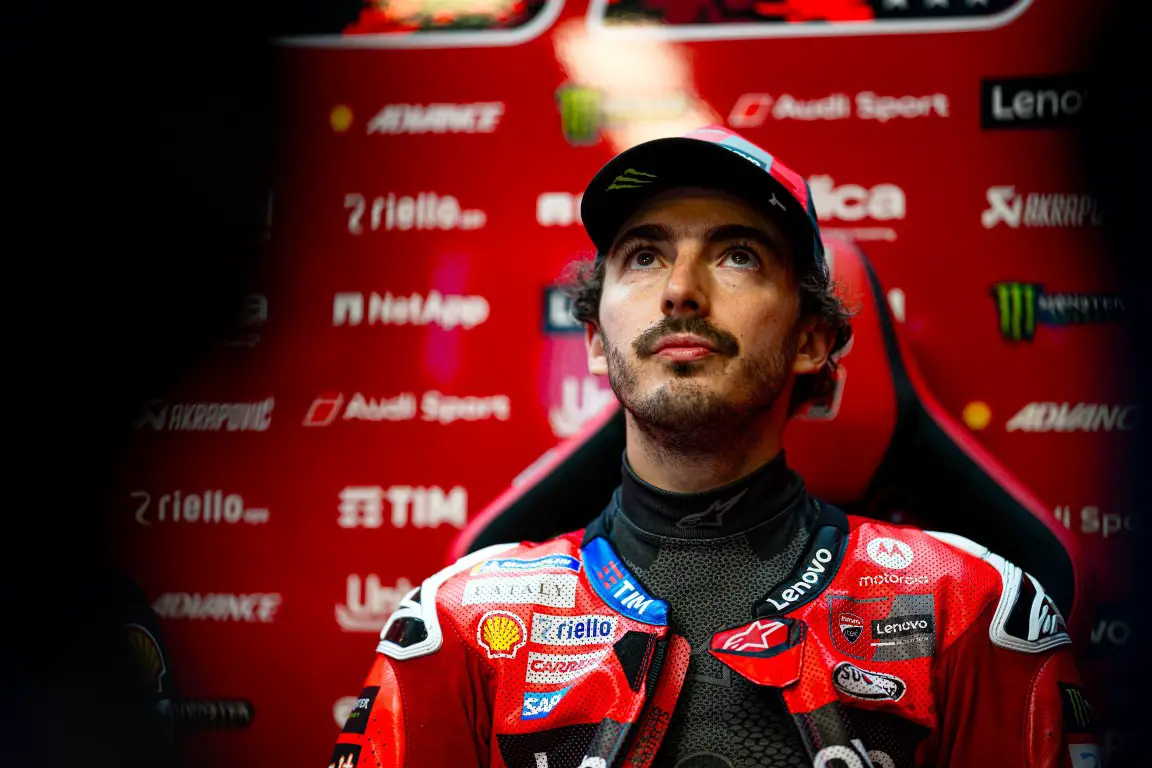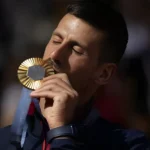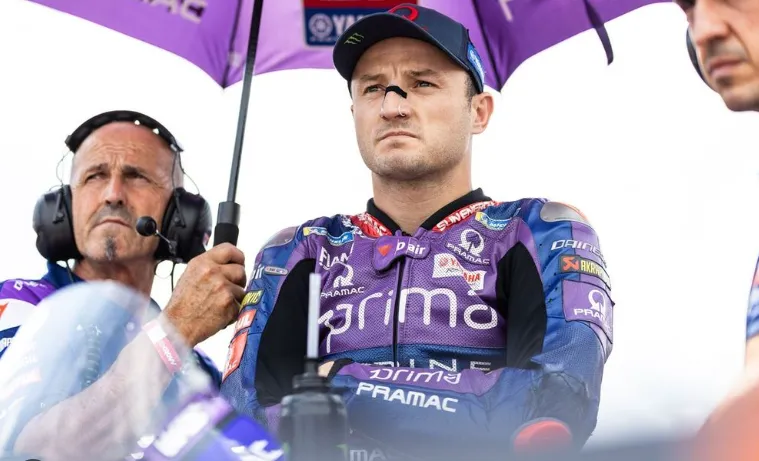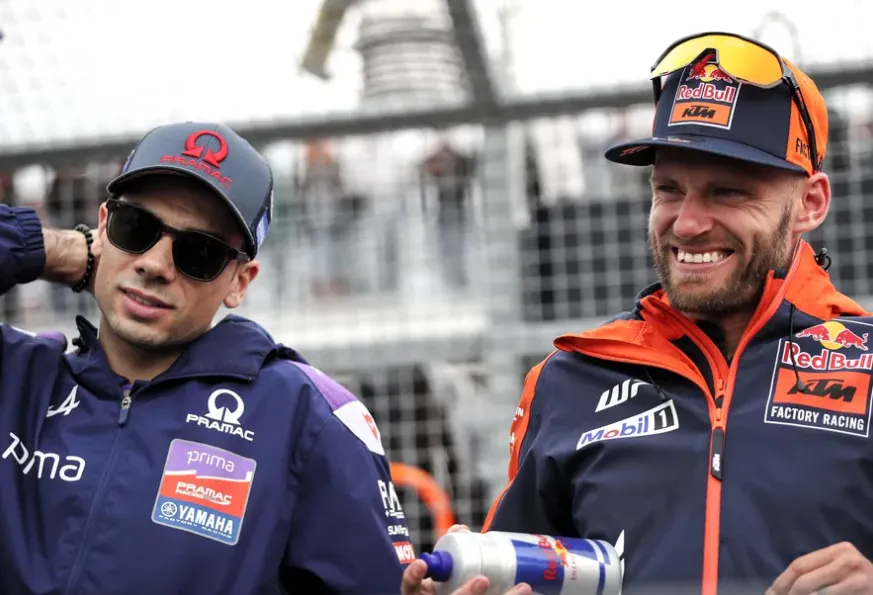

Pecco Bagnaia Sends a Message to the MotoGP Management: Need Better Start Management
In the high-octane world of MotoGP, decisions made in the heat of the moment can carry major consequences — a reality brought into sharp focus after the recent Grand Prix in Le Mans. Following a chaotic sprint marked by split tyre strategies and changing track conditions, Francesco Bagnaia has spoken candidly about his post-race discussion with teammate Enea Bastianini, and his concerns surrounding how the sport is being managed under unpredictable conditions.
Collision in Le Mans: A Product of Circumstance
The Italian Ducati star acknowledged that tensions were high after his on-track collision with Bastianini, but he stressed that there were no hard feelings between the teammates.
“Yeah, we spoke after the race,” said Bagnaia. “Half of the grid was on wet tyres, half on slicks — different speeds, different perceptions of where to brake — and we collided. It’s something that always happens.”
The collision, which occurred in the early laps of the sprint, was emblematic of the confusion that unfolded as riders struggled to adapt to rapidly evolving weather conditions. According to Bagnaia, much of the chaos could have been avoided with a more measured approach from race officials.
“If they had waited ten minutes before letting us go, everyone would have had the same tyres. So maybe sometimes it’s better to wait a little and then let us race,” he continued.

Concerns Over Rule Implementation Post-Americas GP
Bagnaia’s comments come amid ongoing debate surrounding the rule changes implemented after the Grand Prix of the Americas. Though he stopped short of criticizing the regulation updates directly, the defending world champion pointed out potential safety oversights in the current system.
“I don’t know, honestly,” Bagnaia responded when asked whether this incident was an unintended consequence of the new rules. “They know the rules better. It’s not my job. But what I’ve seen since the start of the season is that sometimes, even when a rider is struggling to get up, they try to remove him from the track very quickly — like in an incident in Le Mans.”
In particular, the Ducati rider seemed to question the race direction’s emphasis on maintaining the race flow, potentially at the expense of rider safety. He cited a moment during the Le Mans race that he believed would have warranted a red flag under more cautious leadership.
“Maybe it would’ve been better to show a red flag and just remove a lap,” he added.
The Risks of Split Tyre Strategies
The clash between Bagnaia and Bastianini was not the only drama during a weekend that saw riders gambling on tyre choices in rapidly changing conditions. The decision to start the race without a delay, despite clear weather discrepancies across the track, resulted in half the grid opting for wet tyres and the other half for slicks.
This kind of split strategy is not unheard of in MotoGP, but it becomes particularly risky on a circuit like Le Mans, where grip levels can vary dramatically even within a single lap. The result was a frantic opening to the sprint, with riders on different compounds experiencing vastly different braking points and acceleration zones.
Bagnaia, ever the pragmatist, believes that many of the risks and collisions could be reduced with more deliberate decision-making from Race Direction.
“Sometimes it’s better to wait a bit, and then let us do what we are there to do,” he concluded. “We are there to race, but safety has to be the priority.”
Bagnaia and Bastianini: Tension or Mutual Understanding?
The clash between Bagnaia and Bastianini sparked speculation about internal tension at Ducati, a team that already walks a delicate line managing two competitive and ambitious riders. However, Bagnaia’s post-race comments suggest the incident has not fractured their working relationship.
Both riders, according to Bagnaia, recognized the unusual circumstances of the race. Rather than blame, there was mutual understanding of the confounding factors that contributed to the incident.
This kind of maturity will be crucial for Ducati as they navigate a tense 2025 championship battle, where even minor incidents can have massive implications in the title race.
MotoGP’s Safety vs Spectacle Debate Intensifies
As MotoGP evolves to meet the demands of modern viewership — with shorter races, more sprints, and less downtime between sessions — rider safety remains a hot-button issue. While fans relish the edge-of-your-seat unpredictability of weekends like Le Mans, many within the paddock are increasingly vocal about the need for clearer protocols in adverse conditions.
The decision to start the Le Mans sprint without delay could serve as a case study in the dangers of prioritizing spectacle over safety. Bagnaia’s measured remarks are a reminder that the sport’s gladiators still rely on Race Direction to set the tone and pace responsibly.

Ducati’s 2025 Season: A Balancing Act
While Bagnaia’s comments will likely spark renewed conversation about MotoGP’s evolving rulebook, they also underscore the difficult balance Ducati must maintain. With two elite riders capable of winning any weekend, managing team dynamics, race strategy, and safety concerns becomes a three-dimensional chess game.
For Bagnaia, who is once again in the mix for a world title, the goal is simple: keep racing at the highest level while calling out areas where improvement is needed.
In a sport where milliseconds and millimeters separate triumph from disaster, his call to “wait a bit” before rushing into risky conditions is one that the MotoGP leadership would be wise to consider.
Looking Ahead to the Next Round
As the MotoGP circus moves on to the next Grand Prix, all eyes will be on whether officials adjust their approach to pre-race safety decisions. If Le Mans serves as a turning point, it may have less to do with the standings and more with how riders’ voices — especially experienced champions like Bagnaia — are incorporated into race-day decisions.
Until then, Bagnaia continues to do what he does best: race fast, speak honestly, an


















